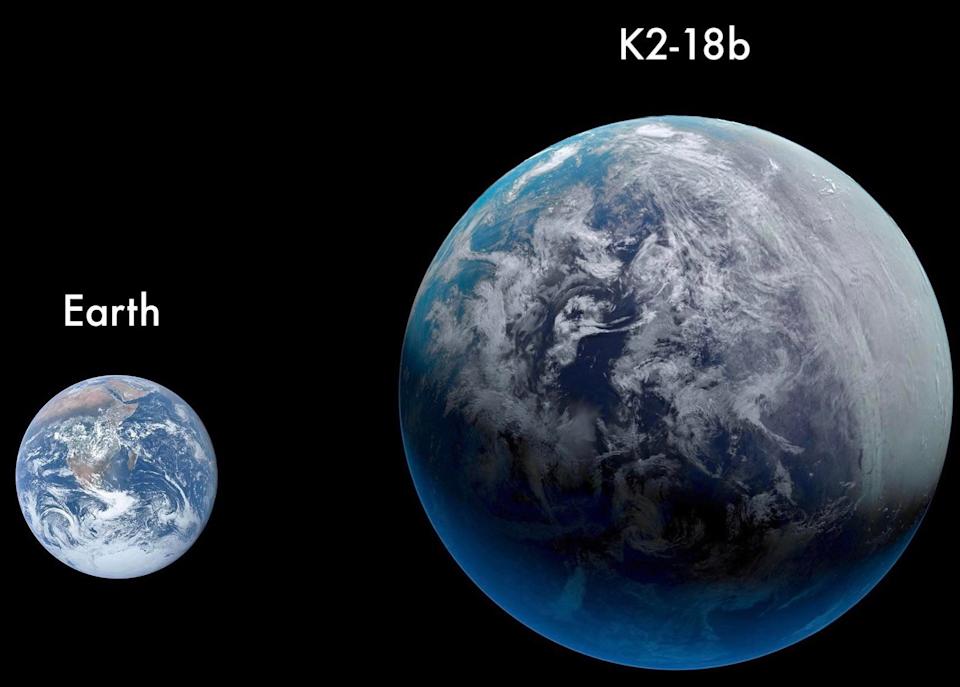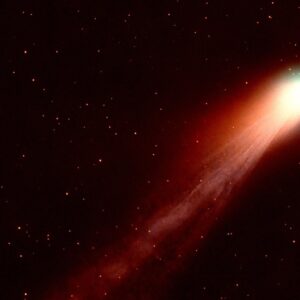Scientists from Cambridge University have discovered a potential clue that may point to alien life—on a planet far beyond our solar system. This planet, called K2-18b, lies about 124 light-years away in the constellation Leo. It’s not Earth-like, but it’s turning heads for a different reason.

Why K2-18b Matters
K2-18b isn’t a rocky planet like ours. It’s a Hycean world—a type of planet believed to have both hydrogen-rich atmosphere and a deep ocean underneath.
What makes this planet stand out is what scientists found in its atmosphere: dimethyl sulfide (DMS).
On Earth, DMS is only produced by living organisms—specifically, marine plankton. That makes its detection on another planet extremely intriguing.
“We’re not claiming to have found life,” one researcher said. “But this is a strong indication that we should look much closer.”
What Exactly Did They Find?
Using the James Webb Space Telescope, researchers scanned the atmosphere of K2-18b. Their tools picked up gases such as:
- Dimethyl sulfide (DMS)
- Carbon dioxide (CO₂)
- Methane (CH₄)
Together, these point to a possible biosignature—a chemical sign that may be linked to life.
While it’s not proof, DMS is not something that typically forms without biological activity. So, this hint has become a major topic of discussion among space scientists.
So, Is There Life?
The short answer: not confirmed.
This is an exciting step forward, but it’s too early to say for sure. The presence of DMS could have other explanations, like unknown chemical processes we haven’t identified yet.
Still, the fact that DMS is linked to living organisms on Earth makes it a strong candidate for further investigation.
“It’s like seeing a footprint,” said another expert. “It doesn’t guarantee a person is nearby, but it makes you stop and look around.”
What This Means for Space Exploration
This discovery might change where and how we search for life. Until now, most space missions focused on planets that resemble Earth. K2-18b isn’t like Earth—but it might still support life.
Scientists are now considering the possibility that life could survive in very different environments, including ocean planets with thick atmospheres.
Upcoming space missions will likely focus more on Hycean planets. These may offer better chances of finding biosignatures than previously thought.
Challenges Ahead
Studying a planet so far away isn’t easy. At 124 light-years, it’s unreachable with current spacecraft. All we can do now is:
- Continue atmospheric analysis
- Improve telescope sensitivity
- Launch new observation missions in coming decades
There’s also the risk that DMS might have a non-biological origin, which would change the meaning of the discovery.
Final Thought
K2-18b may not confirm alien life, but it brings us closer to the truth. It shifts our focus to ocean planets and expands the possibilities for life beyond Earth.
It also reminds us how much we still have to learn—not just about other worlds, but about the many ways life can begin and survive.
“This could be one of the first serious signs that we are not alone.”
References:
- NASA: https://exoplanets.nasa.gov
- ESA: https://www.esa.int/Science_Exploration/Space_Science/Exoplanets
- Cambridge University: https://www.cam.ac.uk









